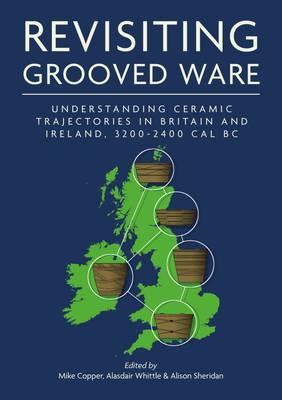
- Retrait gratuit dans votre magasin Club
- 7.000.000 titres dans notre catalogue
- Payer en toute sécurité
- Toujours un magasin près de chez vous
- Retrait gratuit dans votre magasin Club
- 7.000.0000 titres dans notre catalogue
- Payer en toute sécurité
- Toujours un magasin près de chez vous
Revisiting Grooved Ware
Understanding Ceramic Trajectories in Britain and Ireland, 3200-2400 Cal BC
121,45 €
+ 242 points
Description
Following its appearance, arguably in Orkney in the 32nd century cal BC, Grooved Ware soon became widespread across Britain and Ireland, seemingly replacing earlier pottery styles and being deposited in contexts as varied as simple pits, passage tombs, ceremonial timber circles and henge monuments. As a result, Grooved Ware lies at the heart of many ongoing debates concerning social and economic developments at the end of the 4th and during the first half of the 3rd millennia cal BC.
Stemming from the 2022 Neolithic Studies Group autumn conference, and following on from Cleal and MacSween's 1999 NSG volume on Grooved Ware, this book presents a series of papers from researchers specializing in Grooved Ware pottery and the British and Irish Neolithic, offering both regional and thematic perspectives on this important ceramic tradition. Chapters cover the development of Grooved Ware in Orkney as well as the timing and nature of its appearance, development, and subsequent demise in different regions of Britain and Ireland. In addition, thematic papers consider what Grooved Ware can contribute to understandings of inter-regional interactions during the earlier 3rd millennium cal BC, the possible meaning of Grooved Ware's decorative motifs, and the thorny issue of the validity and significance of the various Grooved Ware sub-styles.
The book will be of great value not only to archaeologists and students with a specific interest in Grooved Ware pottery but also to those with a more general interest in the development of the Neolithic of Britain and Ireland.
Stemming from the 2022 Neolithic Studies Group autumn conference, and following on from Cleal and MacSween's 1999 NSG volume on Grooved Ware, this book presents a series of papers from researchers specializing in Grooved Ware pottery and the British and Irish Neolithic, offering both regional and thematic perspectives on this important ceramic tradition. Chapters cover the development of Grooved Ware in Orkney as well as the timing and nature of its appearance, development, and subsequent demise in different regions of Britain and Ireland. In addition, thematic papers consider what Grooved Ware can contribute to understandings of inter-regional interactions during the earlier 3rd millennium cal BC, the possible meaning of Grooved Ware's decorative motifs, and the thorny issue of the validity and significance of the various Grooved Ware sub-styles.
The book will be of great value not only to archaeologists and students with a specific interest in Grooved Ware pottery but also to those with a more general interest in the development of the Neolithic of Britain and Ireland.
Spécifications
Parties prenantes
- Editeur:
Contenu
- Nombre de pages :
- 304
- Langue:
- Anglais
- Collection :
Caractéristiques
- EAN:
- 9798888570326
- Date de parution :
- 18-01-24
- Format:
- Livre broché
- Format numérique:
- Trade paperback (VS)
- Dimensions :
- 170 mm x 240 mm

Les avis
Nous publions uniquement les avis qui respectent les conditions requises. Consultez nos conditions pour les avis.





